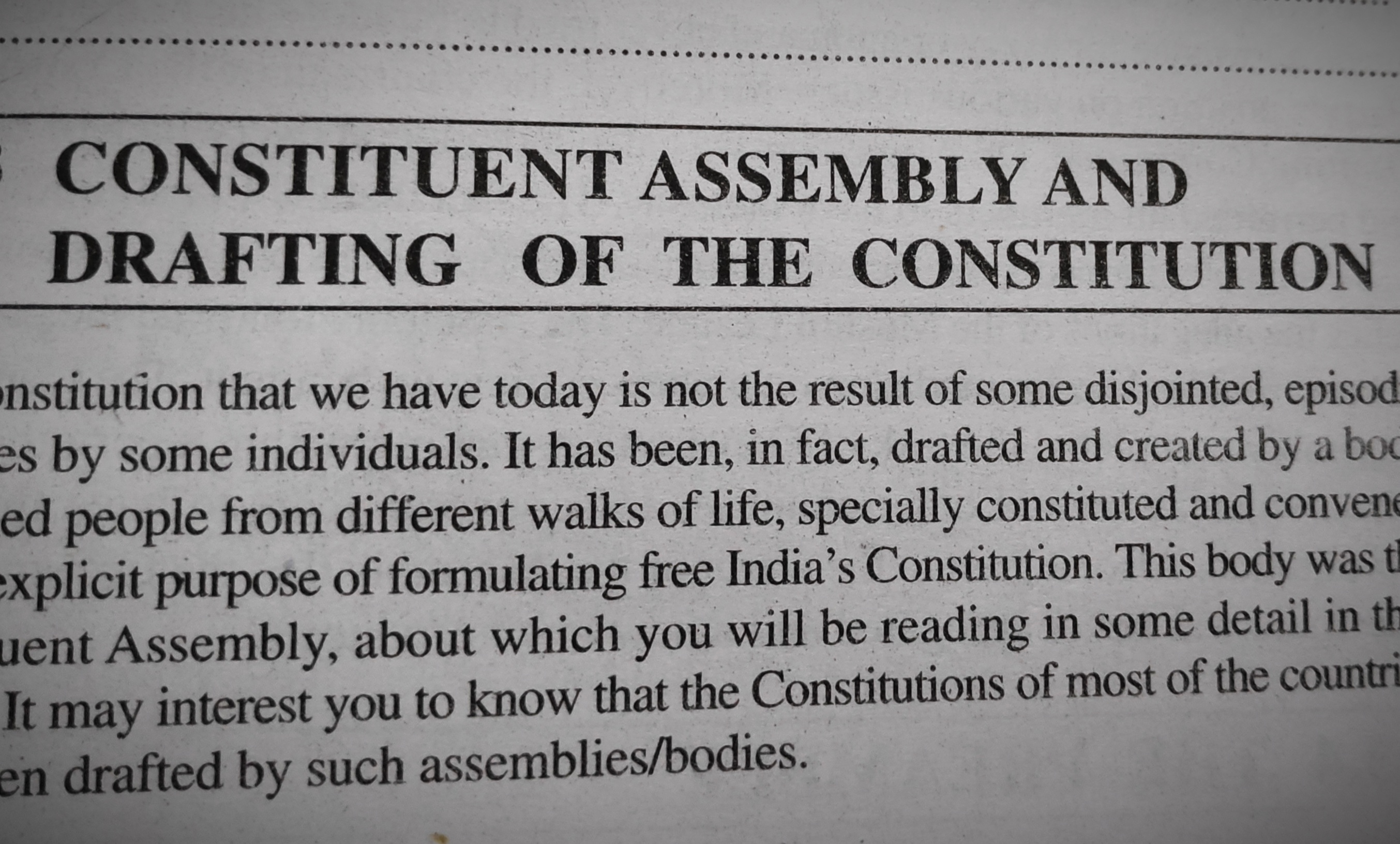Constituent Assembly and Drafting of The Constitution: The Constitution that we have today is not the result of some disjointed, episodic exercise by some individuals.
Constituent Assembly and Drafting of The Constitution
Page Contents
It has been in fact drafted and created by a body of learned people from different walks of life. Specially constituted and convened for the explicit purpose of formulating free
India’s Constitution. This body was the Constituent assembly, about which you will be reading in some detail in this section. It may interest you to know that the Constitution of most of the countries have been drafted by such Assemblies/bodies.
Composition: The Constituent Assembly was headed by Dr. Rajendra Prasad who later on became India’s first president.
Jawahaelal Nehru who became the first Prime Minister of free India was possibly the most prominent figure of the Assembly.
Constituent Assembly and Drafting of The Constitution
Among the other famous names, the Assembly comprised luminaries like Dr. B.R. Ambedkar, Sardar Vallabh Bhai Patel, Pattabhi Sita Ramyya and J.B. Kriplani.
A good number of the membership of the Assembly was dwan from different political parties, most important of which were the Congress and the Muslim League. In addition, independent members, representatives from the Governor’s Province and the Princely states were also present.
The core of the Constituent Assembly was the drafting Committee which was chaired by Dr. B.R. Ambedkar.
It should , therefore, therefore, not surprise you that Ambedkar is often described as the Father of India’s depressed classes.
he had an eminent professional background and legal expertise and was , thus well equipped to pilot the Costitution framing process and to deal with the various complexities inevitable in the Herculean task.
Ambedkar’s influence can be particularly seen in the special provisions for Scheduled Castes and Tribes (SCs and STs) that the Constitution came to incorporate.
The various provisions of the Constitution were debated at length in the several committees that were formed for the purpose.
After extensive debates and discussions, these provisions were presented to the Assembly for due consideration.
Based on the deliberations in the Assembly the Drafting Committee prepared the draft text to the Constitution.
The final document after amendments was signed on November 26, 1949 and came into force two months later.
Constituent Assembly and Drafting of The Constitution
A Critique: The Constituent Assembly was a body of accomplished people which laboured assiduously to give up to free India a Constitution that Indians would be proud of.
Still the Assembly has been subjected to some criticisms. The main criticism against the Assembly spearheaded essentially by the Muslim league.
The league was that it was a Congress/Hindu dominated body.
Because of this belief and conviction the league never participated enthusiastically in the deliberation of the Constituent Assembly and eventually stayed away.
Constituent Assembly and Drafting of The Constitution
The Congress was led by Jawaharlal Nehru who was a democrat to the core. He made allowance for every opinion and never tried to bulldoze his or the Congress Party’s position on various issues.
Moreover the chairman of the Constitution Drafting Committee , Dr. B.R. Ambedkar was also a democrat every inch of the way and permitted all members to have their say.
The fact that the Constitution which was eventually framed took due cognisance of the aspirations of religious minorities belies the allegations of the Muslim League.
The Assembly followed the principles of consensus and accommodation on matter coming up before it. The Constituent Assembly completed the task of Constitution making within a period of three years, whereas several other countries took several years to have their first Constitution.
Also it goes to the credit of the Assembly that the Constitution of free India was never abrogated and a new one introduced.
Constituent Assembly and Drafting of The Constitution
The Preamble: The Preamble or the beginning of any Constitution is aslo known as its soul or sprit. So is the case with the Indian Constitution.
Its Preamble sets out the tone and tenor of the entire Constitution. It declares India to be a sovereign secular democratic republic assuring liberty of thought, expression and belief to all its citizens, equality and justice to all the citizens.
These words constitute the cornerstone of the Constitution. The main body of the Constitution is an evocation of the beliefs and ideals enshrined in the Preamble.
Constituent Assembly and Drafting of The Constitution
The exact text of the Preamble, which you should know is given below:
“We the people of India having solemnly resolved to constitute India into a Sovereign Socialist Secular Democratic Republic and to secure to all its citizens:
Justice, social, economic and political.
Liberty of thought, expression, belief faith and worship.
Equality of status and of opportunity , and to promote among them all.
Fraternity assuring the dignity of individuals and the unity and integrity of the Nation.
In our Constituent Assembly; this twenty-sixth day of November 1949, do Hereby Adopt, Exact and Give to Ourselves This Constitution.”
If you like this article then please comment and share in social media with your friends.
For more reference click here


